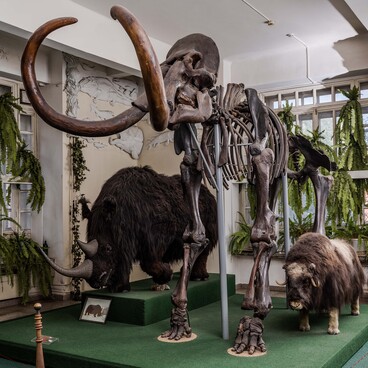The fin whale is a species of whale in the rorqual family. It is one of the largest animals on the planet, second only to the blue whale. Fin whales grow up to 20 meters in length and weigh about 70,000 kilograms. Fin whales are much slimmer than the blue whale, with a small head and distinctive coloring: the lower jaw, belly and inner part of the flippers are white.
Fin whales are found in all oceans of the planet and migrate to warmer waters in winter. Their diet includes crayfish, cephalopod mollusks and gregarious fish such as herring, capelin, sand lance and cod. Fin whales can submerge for eight minutes and then surface with a fountain of up to ten meters. Fin whales produce moans that resemble the sound of a flute going from low to high pitches — such a signal continues for about a second and is repeated several times.
Fin whales live alone or in small groups of two to three specimens. They are among the fastest whales, traveling at speeds of up to 40 km/h. Fin whales can hold their breath for 15 minutes and dive to depths of over 200 meters. Once in the ice hole, the fin whale places the tip of its snout, like a sei whale or minke whale, on the edge of the ice floe and, leaning on it, either exposes its blowhole to the air or submerges it in the water for several minutes.
The pregnancy of a female fin whale lasts for a whole year, and the calf is born weighing almost two tons and more than six meters long. The baby feeds on milk for six months and reaches sexual maturity only by the age of 10. The average life expectancy of a fin whale is 100 years.
Young fin whales can be killed by orcas, but human beings remain the whales’ main enemy. After the blue whale was practically exterminated, people moved to full-scale hunting of fin whales. A single whale yields up to 10 tons of fat and up to 30 tons of meat.
By the end of the 20th century, the fin whale
population had declined dramatically due to overfishing in the world’s oceans.
Since 1980, a complete ban on fishing for fin whales has been in place, and the
species is listed in the Convention on International Trade in Endangered
Species of Wild Fauna and Flora. The fin whale is included in the Red Lists of
the International Union for Conservation of Nature of Russia and Krasnoyarsk
Krai.





